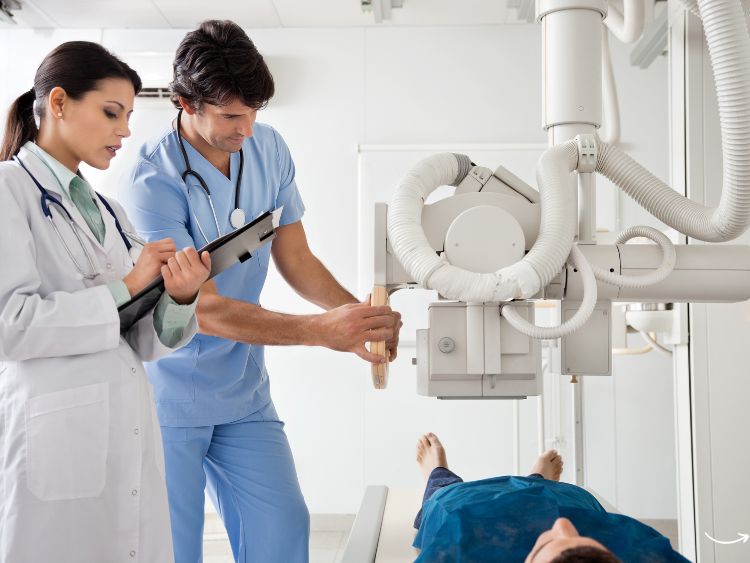What if we could peek inside the human body with a clarity and precision previously unimaginable? That’s exactly what progressive radiology promises. This cutting-edge field is revolutionizing how we diagnose and treat diseases by leveraging the latest advancements in medical imaging technology. From AI-powered analysis to real-time imaging, progressive radiology is not just an evolution—it’s a transformation. Buckle up as we dive into the fascinating world of progressive radiology, exploring how it’s reshaping the landscape of healthcare.
What Is Progressive Radiology?
Progressive radiology is a term that captures the dynamic, forward-moving nature of medical imaging. It encompasses the integration of advanced technologies such as artificial intelligence (AI), machine learning, and high-definition imaging systems into traditional radiological practices. This synergy not only enhances the accuracy of diagnoses but also streamlines workflows in radiology departments, leading to faster and more patient-centric care.
The Technological Backbone of Progressive Radiology
- Artificial Intelligence and Machine Learning:
- Automated image analysis
- Prediction of disease progression
- Personalized treatment plans
- Advanced Imaging Technologies:
- High-definition CT scans and MRI
- 3D imaging and visualization
- Real-time imaging during surgical procedures
- Digital and Cloud-Based Solutions:
- Remote access to imaging data
- Collaboration across different geographical locations
- Secure storage and easy retrieval of patient data
Revolutionizing Diagnosis and Treatment
Progressive radiology is making waves by turning what was once science fiction into everyday reality. Here’s how:
- Early Detection and Diagnosis: With high-resolution imaging, doctors can detect abnormalities like tumors at their earliest stages, significantly improving patient outcomes.
- Precision Medicine: Tailored treatment plans are devised based on the unique aspects of a patient’s imaging results, leading to more effective care and better recovery rates.
- Minimally Invasive Procedures: Real-time imaging guides surgeons during minimally invasive procedures, reducing recovery times and enhancing surgical precision.
Impact on Patient Care
The advent of progressive radiology has marked a new era in patient care. Patients now experience less invasive testing, quicker diagnosis, and personalized treatment plans. Let’s not overlook the reduced radiation exposure in newer imaging techniques, which safeguards patient health during diagnostic processes.
Streamlining Healthcare Workflows
Progressive radiology isn’t just about the images; it’s also reshaping how healthcare facilities operate:
- Enhanced Collaboration: Radiologists can now work seamlessly with physicians across different specialties, providing a holistic approach to patient care.
- Efficiency Gains: Faster imaging processes and AI-driven analysis reduce waiting times and improve the throughput of radiology departments.
- Cost Reduction: By improving diagnostic accuracy, progressive radiology reduces the need for redundant tests and ineffective treatments, cutting down overall healthcare costs.
Challenges and Considerations
Despite its benefits, progressive radiology faces its own set of challenges:
- Data Privacy and Security: With the increase in digital imaging data comes the heightened risk of data breaches. Ensuring robust security measures is paramount.
- Technological Disparities: There exists a significant gap in access to advanced imaging technologies between developed and developing regions.
- Regulatory Hurdles: The integration of AI in medical imaging necessitates navigating complex regulatory landscapes, which can delay the adoption of new technologies.
Frequently Asked Questions
What makes progressive radiology different from traditional radiology?
Progressive radiology incorporates advanced technologies like AI and high-definition imaging, which enhance diagnostic accuracy and patient care, unlike traditional methods that rely more on manual interpretation.
How does progressive radiology benefit patients?
It offers quicker and more accurate diagnoses, less invasive procedures, and personalized treatment plans, significantly improving the overall patient experience and outcome.
Are there any risks associated with progressive radiology?
While progressive radiology reduces exposure to harmful radiation, the primary concerns revolve around data security and ensuring equitable access to advanced diagnostic tools.
Conclusion
Progressive radiology is not just a leap forward in medical imaging; it’s a giant leap for healthcare. By integrating cutting-edge technology with traditional diagnostic techniques, it offers unprecedented precision in the detection, diagnosis, and treatment of diseases. As we continue to navigate its challenges, the potential to transform patient care is immense.



